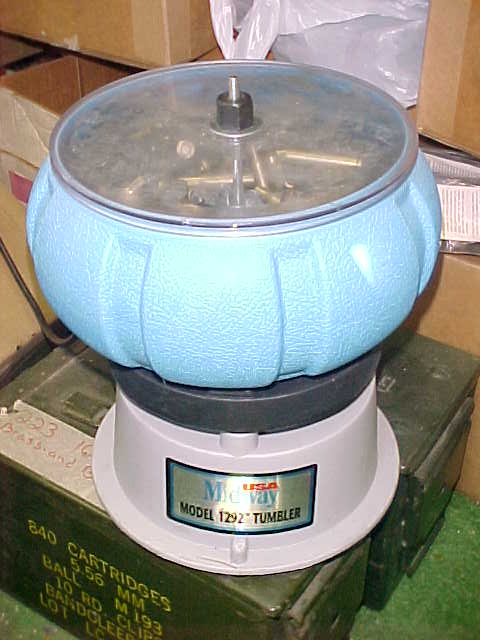
IF YOU REACHED THIS PAGE VIA A SEARCH ENGINE
THIS WILL TAKE YOU TO OUR HOME PAGEThis will take you to the Reloading Index
Steve's Rifle Cartridge Reloading
These are the techniques and equipment that
I use to produce reloaded cartridges for bolt and semi-automatic rifles. Other techniques and equipment may be: better/worse, cheaper/costlier, safer/more dangerous or whatever. Read this stuff and use it or not, at your own risk!Case Selection and Preparation
Unless you're making a wildcat cartridge or reforming one case to another, the case your going to use must match the chamber it will be fired in. These can be obtained a few different ways, the best is to use cases from fresh factory ammunition that were fired in the very same rifle it will be re-fired from. Second best is to buy new, never loaded cases and load them. Then comes "once fired" range brass, either from a supplier or stuff that you picked up yourself at your local range.
If the "range brass" you get is US military, it will almost certainly be truly "once fired", especially if you get it with the spent primer in place. Other "range brass" either purchased or picked up may NOT be once fired. Unless you have access to a range used for police practice!
Also, cases are manufactured to accept ONE of two primer designs, Boxer OR Berdan. The difference is in the size (diameter) of the primer, and the location of the anvil/flash holes. See this link for a photo and explanation. And, cases are manufactured out of aluminum OR brass OR steel. In any event, I DO NOT RELOAD steel or Berdan primed cases, although some people do.

Unless I'm using new, never fired brass, I ALWAYS clean or polish any cases before I proceed any farther. Clean cases offer less wear to the sizing die, are less likely to get stuck in the die, and afford a chance to inspect the cases for defects. The cleaning is done in a vibratory "tumbler" using some sort of "media" to clean the cases of dirt and crud. Ý Ý Ý Above is a Midway vibratory tumbler. I have installed a see-thru top and a quick-release nut, but these are not really required. Some people use a real tumbler, a container that rotates.
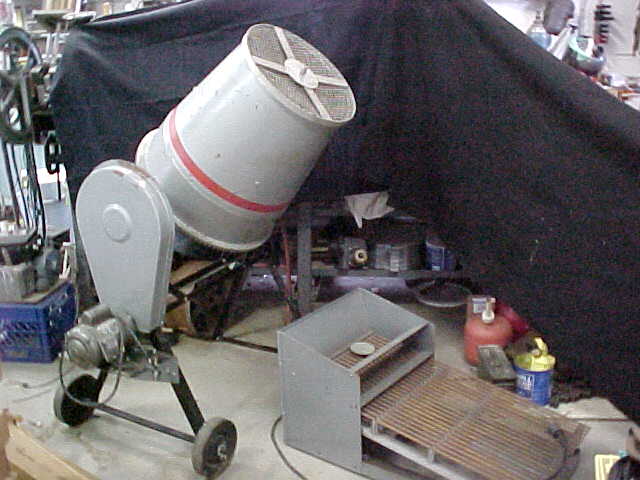
Or, if your doing a LOT of range brass, the AmmoMaster Corp. offers one with a 20,000 round capacity J .

The tumbler is filled with cases and cleaning media, the two most commonly used media are ground walnut hulls ( left ) and dried, ground corncobs ( right ). The ground walnut hulls are very small and don't get stuck in the primer holes, while the corn cob is a little bigger, and in MY opinion leaves the cases a little cleaner. Some reloaders also add a polishing liquid to the cob media too make the cases really SHINE.
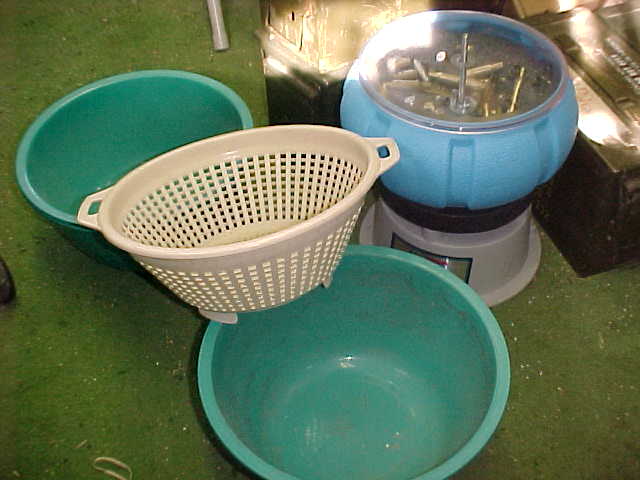
After two to ten hours of "tumbling" the media and cases are dumped into a colander (the thing used to separate water from pasta). The "Any Thing for A Dollar" store is a great place.
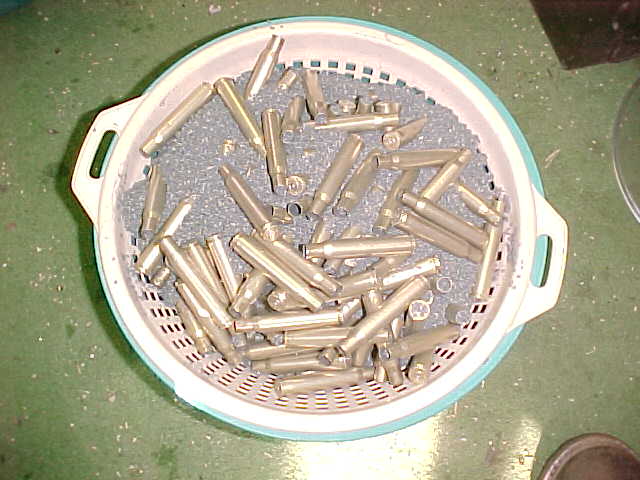
The cases are separated from the media and the media can be reused.
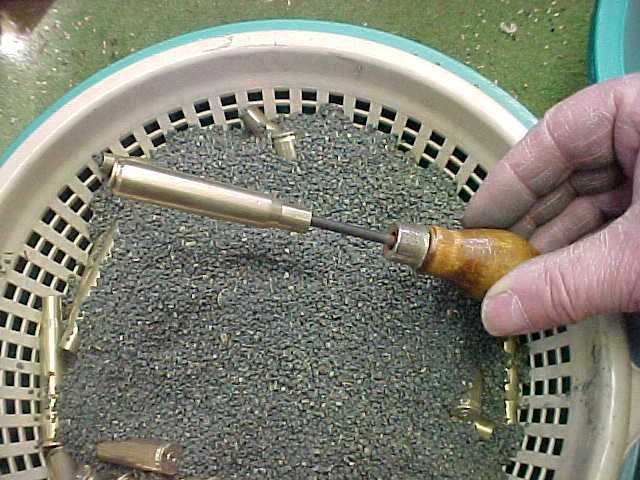
During the separation process, I probe the interior with an awl, making a circular motion. If it's really pick-up brass, or has been stored uncovered, lots of strange stuff can accumulate inside the case, spiders n' stuff.
This will take you to the Reloading Index